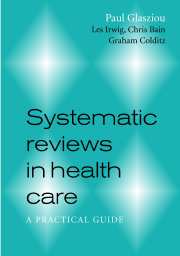Appendix B - Software for meta-analysis
Published online by Cambridge University Press: 01 September 2009
Summary
Many standard statistical software packages provide facilities that would facilitate meta-analysis (e.g. by the use of logistic regression). Some packages have had routines or macros speciWcally developed to allow meta-analysis. For example, STATA has a macro for the analysis of multiple 2 × 2 table data (this is available in the STATA Technical Bulletin Reprints, 7, sbe16: Meta-analysis. S. Sharp & J. Sterne, www.stata.com).
In addition to standard statistical software, over the last several years a number of programs speciWcally designed to perform meta-analysis have been developed, some of which are described below. None of these is comprehensive or capable of performing all of the types of analysis discussed in Part 2. In particular, there is only one program available for performing adequate meta-analytic studies. Even for a single question type, however, it may be necessary to use more than one package to achieve an adequate range of analyses. Some of the packages are freely available and others are commercial packages costing a few hundred dollars. This list is not comprehensive; another listing is also available on the Internet (www.bmj.com/cgi/content/full/316/7126/221).
Information
- Type
- Chapter
- Information
- Systematic Reviews in Health CareA Practical Guide, pp. 114 - 116Publisher: Cambridge University PressPrint publication year: 2001
